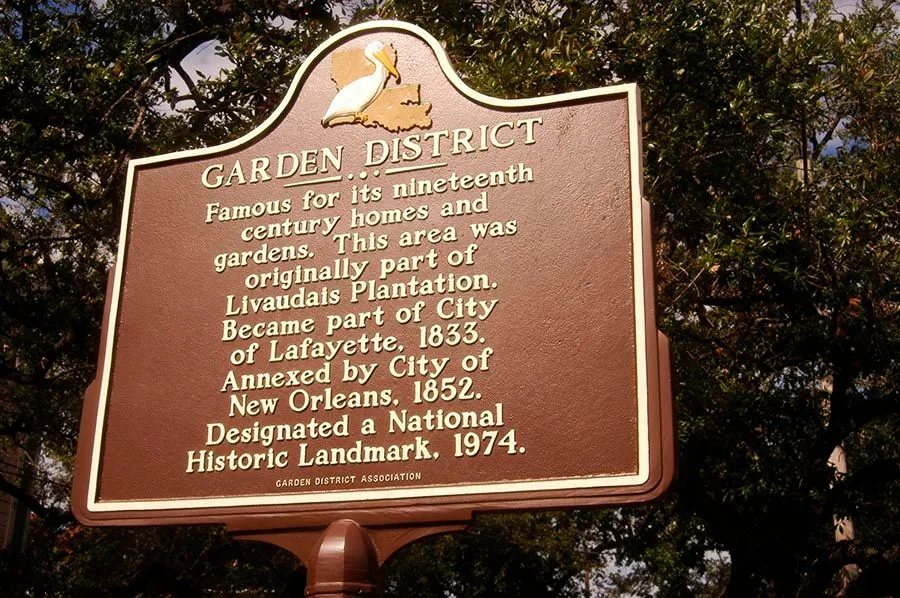The History of New Orleans' Garden District
Timeless Beauty, Living History
The Financial Boom of the 1800's.
In 1803, when the United States bought New Orleans, along with the rest of the land in the Louisiana Purchase, the city had only about 8,000 people living in it. Planned on a tight grid, the city stretched just eleven blocks along a curve of the Mississippi River and six blocks back from the levee, to Rampart Street. A little more than three decades later, New Orleans had become a world port, and in 1836 edged out New York City as the busiest export center in the United States. The population had grown to more than 60,000 people.
Fueled by innovations in transportation, like the steam boat, and industrialization the economy was booming. In New Orleans, The French Quarter was blossoming into the urban center of a major metropolitan city, and elite citizens were seeking a suburban oasis to escape the hustle and bustle of the city. Developers identified the potential for upscale neighborhoods down the Mississippi river to the west in what was formerly know as the city of Lafayette.
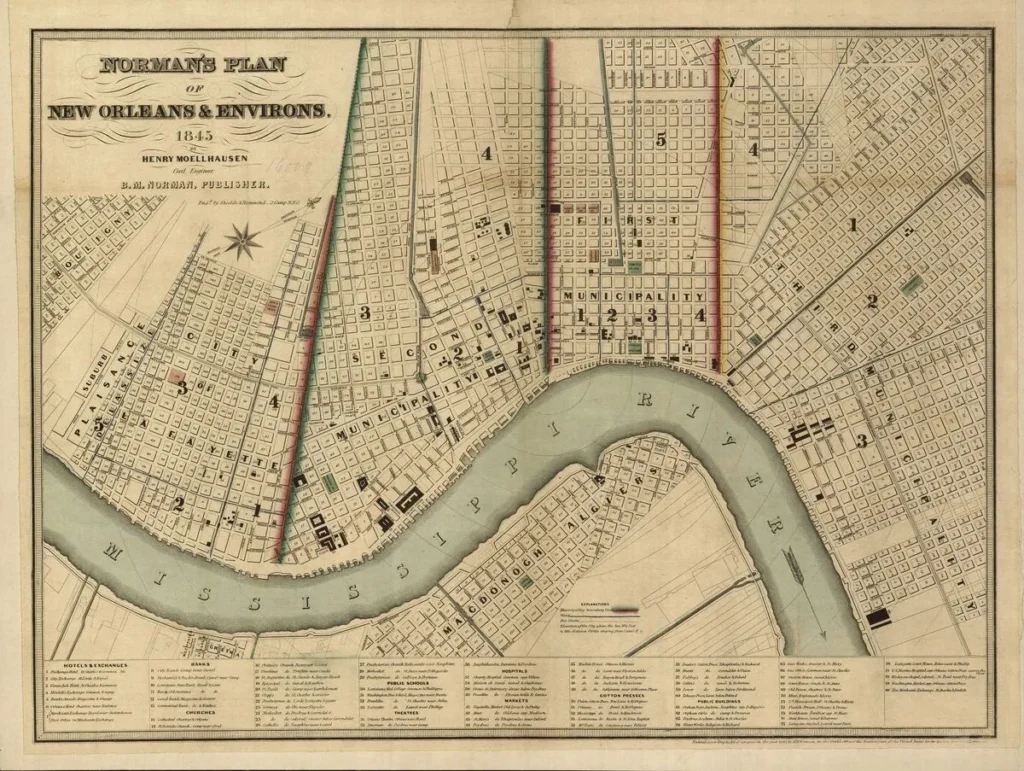
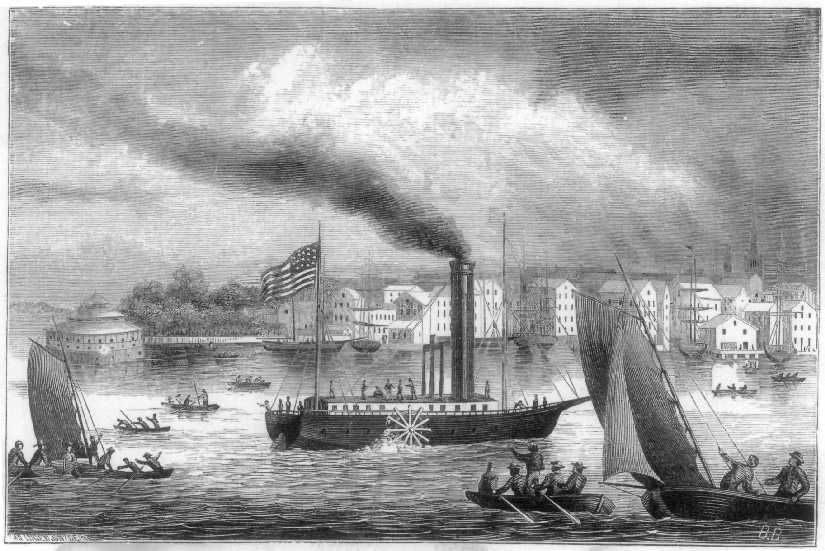
Large Parcels Primed for Development.
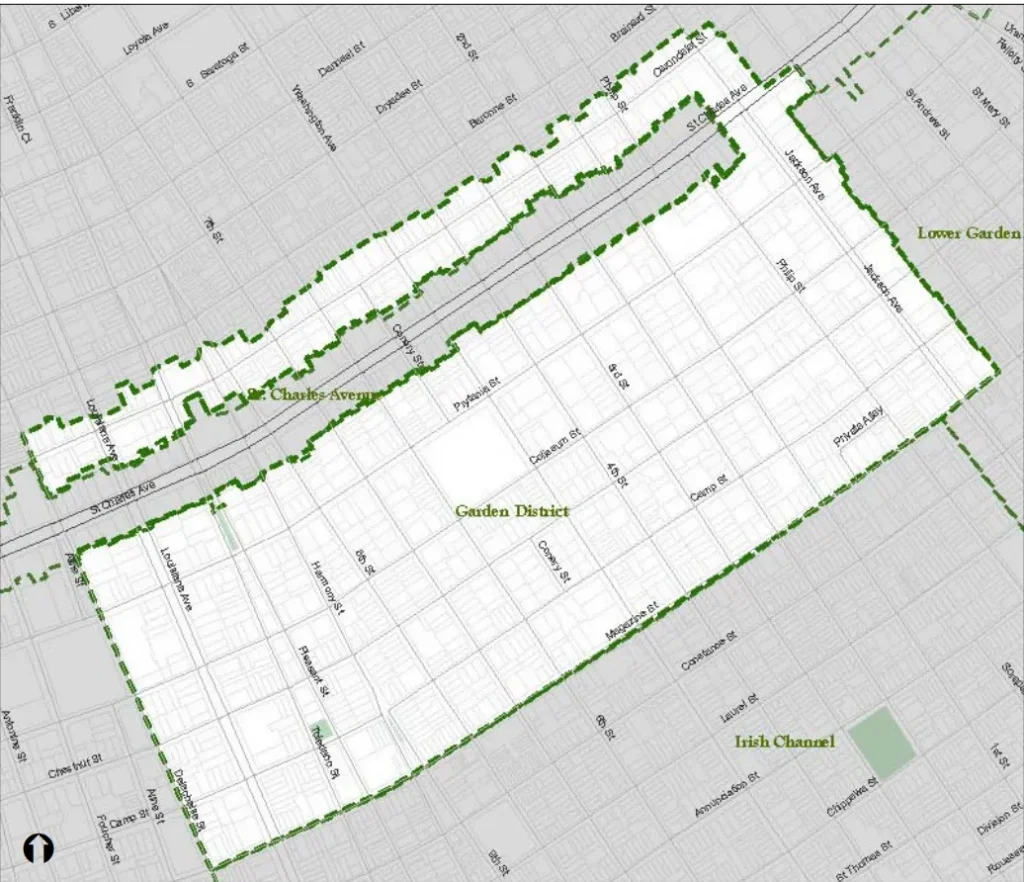

Developers capitalized on the large parcels of plantation land in Lafayette by subdividing them into home plots. Inspired by the English and American garden suburbs of the time, these home plots featured wide boulevards and large, well manicured gardens. Most notable of the plantations that were Subdivided was Livaudais Plantation, which we now know as The Garden District of New Orleans.
With its popular tree-lined streets providing an idyllic setting for leisurely walks and gatherings, traveling writers appropriately dubbed the area the “Garden District.” Some of the city’s most prominent citizens, including authors, politicians, and business leaders, made their homes here. Instead of the typical working-class style of the French Quarter, Bywater and Treme; the Garden District demonstrated the latest in Victorian elegance. Many of the mansion homes of the Garden District were often built in Greek Revival, Italianate, and Victorian styles and are renowned for their intricate ironwork, and stately columns, however the most remarkable feature of these homes were the detailed and beautiful gardens.
1852: The City of Lafayette gets annexed by the City of New Orleans.
As the city blossomed and land along the Mississippi River became more scarce, many of the larger mansion parcels were sold off into smaller parcels to make room for additional homes. As a result, blocks typically have a mix between Antebellum mansions and late 19th century Victorian style mansions with late-style Victorian “gingerbread” style houses appearing in clusters. The Garden District is unique from typical neighborhoods seen today with its inclusion of mansions and modest homes of a variety of architectural styles, all in close proximity to each other.
St. Charles Avenue: A Large Public Avenue With Street Cars
St. Charles Avenue, originally known as Nyades Street, was originally a residential street in the city of Lafayette. St. Charles is one of the more iconic in New Orleans. Upon the introduction of street car lines, St. Charles turned into a major thoroughfare where people would be shuttled back and forth to the city. This new transportation method primed the area for the development of , business, shopping and restaurants on Magazine Street which runs parallel to St. Charles and borders the Garden District to the North. The St. Charles Avenue streetcar line, which officially began operation in 1835, became one of the most famous and enduring streetcar lines in the United States. It initially used steam engines, which were later replaced by electric streetcars in the 1890s. These streetcars are still in operation today.

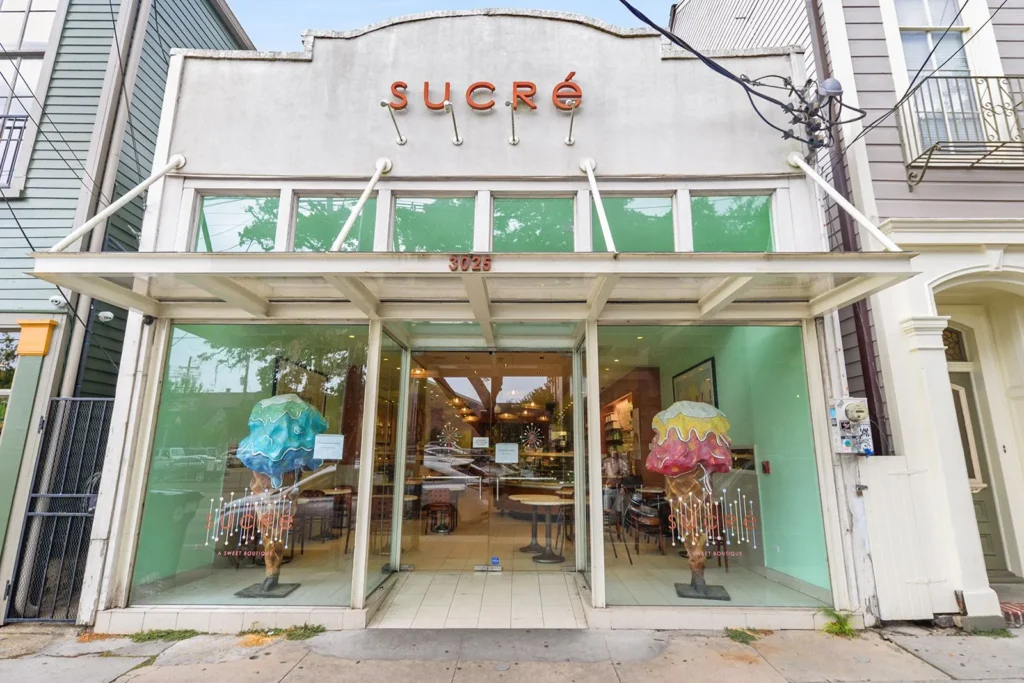
Magazine Street: Business, Shopping, & Creole Cuisine.
In addition to its grand residences, the Garden District includes a shopping corridor, Magazine Street. Named “Magazine” due to its proximity to a military magazine, a storage facility for ammunition and military supplies, became a bustling corridor throughout the 19th Century as popularity of the area grew causing demand for business, shopping and restaurants to service the tourist and residents in the area. Today Magazine Street is still a thriving destination for both locals and tourists.
A National Historic Landmark & The Inspiration for the Garden District Home Collection
Today, The Garden District remains a tightly knit community with its real estate very valuable and highly sought after. The Garden District is listed in the National Register of Historic Places and designated a National Historic Landmark. It is one of the most well preserved collections of architectural history in the United States with many of the homes in the district featuring placards that detail the unique history of each home along with its original owners and designers. These homes are examples of living history that inspired Architect Mike Thompson to create the beautiful Garden District Home Collection, which takes direction from these timeless residences that have lasted more than a lifetime in popularity.
